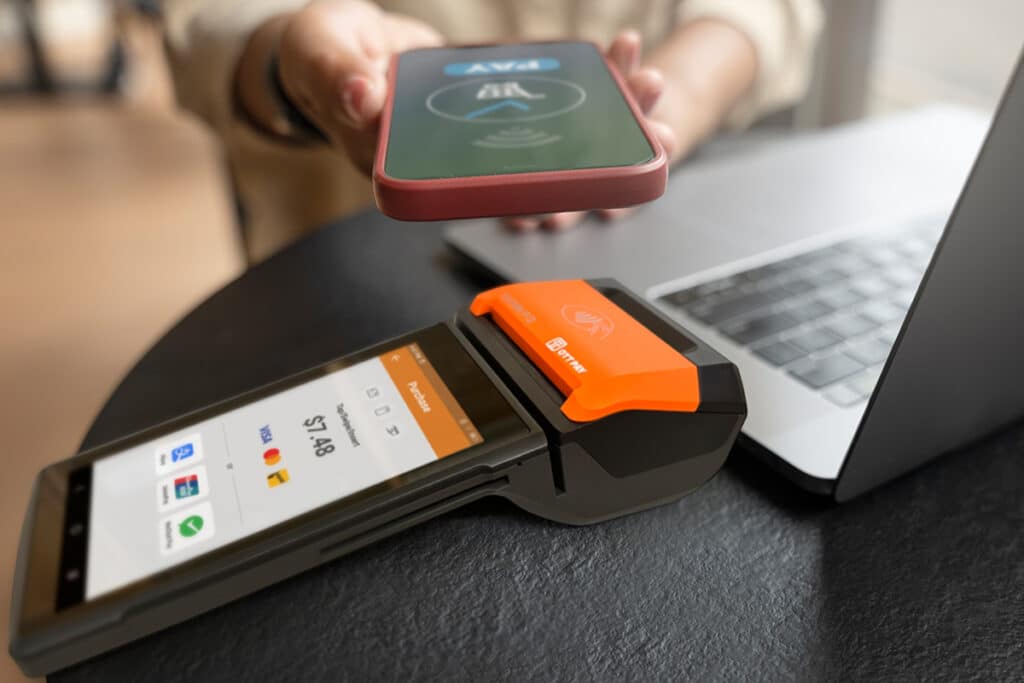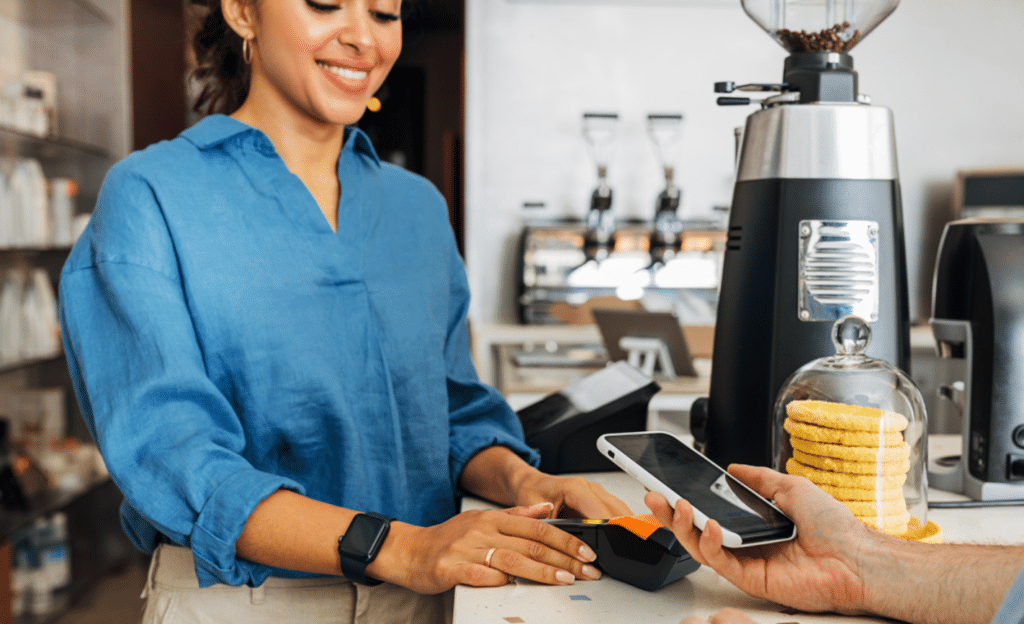Defining What Point of Sale (POS) Are and How They Work
Perhaps you’ve heard fellow business owners talking about the point of sale system they implemented and how it’s made a positive impact. You’re wondering if you should add one to your business but you’re still not sure what a point of sale system is, how they work or what ways they could benefit your business. Here are the basics of what you need to know.
What is a Point of Sale Purchase?
A point of sale purchase is when a customer pays for an item or service at a point of sale system. Three locations where a POS system would typically be at a counter or kiosk, or on the sales floor i.e., a handheld device.
What is a Point of Sale System?
A point of sale or POS system allows your business to accept payments from your customers. It consists of two parts: the front end and the back end.
The front end is where you take the customer’s payment using a cash register or mobile payment device.
The backend is where the payment is processed.

What is a POS System role in payments?
A point of sale system makes it simple and efficient for your business to accept various forms of payment. These include cash, debit card, credit card, digital wallets and international payment methods such as Alipay and WeChat Pay.
Plus, when a customer makes a payment with something other than cash, the POS system will ensure the customer’s payment details are safe and secure, and that you’re protected from fraud.
How does a Point of Sale system work?
A POS system might sound complicated, but the process is simple. It happens in just a few steps:
- Entering the Item — When a customer is ready to buy, the product details are added to the system. This can be done by scanning a barcode or QR code, or by manually typing in the information.
- Calculating & Tracking — The system automatically pulls up the correct price, adds any taxes that apply, and instantly updates your inventory so you know that item is no longer in stock.
- Accepting Payment — Customers can pay in many ways: cash, credit or debit card (with chip, swipe, or tap), gift cards, loyalty points, or even digital wallets like Apple Pay or Google Pay. Some systems, like the OTT Pay POS terminal also handle international payment apps wallets like Alipay and WeChat Pay from China, which can be helpful if you serve global visitors.
- Completing the Sale — For card and digital payments, the system confirms the purchase with the customer’s bank. Once approved, it generates a receipt, which you can print out or send by email.
What hardware is needed to run a POS system?
A basic POS system can be a desktop computer, laptop, tablet or cell phone that you use as your “cash register.” The cost for your point of sale system will increase if you add hardware to your setup. Common additions include a car reader or a barcode/QR code scanner.
What software is needed to run a POS system?
For a POS system to perform, it requires software. The software is the brain behind the system. It’s a program that makes the payment process possible and allows the other features and functions of the point of sale system to work together. For example, the software manages the sales transactions, calculates totals and taxes, keeps track of inventory, stores customer purchase information, produces reports and integrates with your existing accounting software.
In the majority of cases, this software is included with your POS system. It’s usually cloud-based too which means you can log into your point of sale system online, from any location.

What is a Point of Sale cash register?
A point of sale cash register can take many forms. These include a countertop version, handheld, mobile, and virtual. Here’s a quick summary of the types of business each one is ideal for:
- Countertop: clothing shop, convenience store or grocery store.
- Handheld: restaurants or bars.
- Mobile: contractors, delivery services, market vendors or pop-up stores.
- Virtual: online business that accept payments via their website or app.
How a POS system can help boost your sales
Adding a POS system to your business can help your business sell more.
- By speeding up checkout and reducing customer wait times, it will make the shopping experience more pleasant, which encourages people to return.
- A POS system will give you insight into what your best-selling items are, which ones linger unsold, and when you run low on key stock, so you can order smarter and avoid lost sales
- Implementing a point of sale system means you’ll be offering customers a wider range of payment options which will allow you to reach new markets and attract new customers.
How Point of Sale system can make running a business easier
The software that powers your point of sale system can also help you run your overall business more efficiently.
With a POS system in place, checkout becomes quicker and smoother, which means your staff will spend less time executing transactions and more time engaging with customers.
Behind the scenes, the point of sale system gives you access to real-time reports on sales, staffing, and customer behavior, so you have the data you need to make decisions about what to stock, when to reorder, and how to schedule employees.
Inventory management also becomes less of a headache. With a POS system in place, you can add products in bulk, track what’s selling fastest, and generate detailed reports to spot trends.
Conclusion
From an administrative point of view, a POS system will simplify the payment process, streamline operations, help you manage inventory, and provide important business insights. By offering a fast, flexible, and secure checkout experience, you’ll build customer loyalty, encourage repeat business and attract new clients. Whether you run a storefront, travel between job sites, or sell online, implementing a point of sale system can be just the boost your business needs.
Did you know: the OTT Pay Smart POS Terminal accepts all major credit cards.
